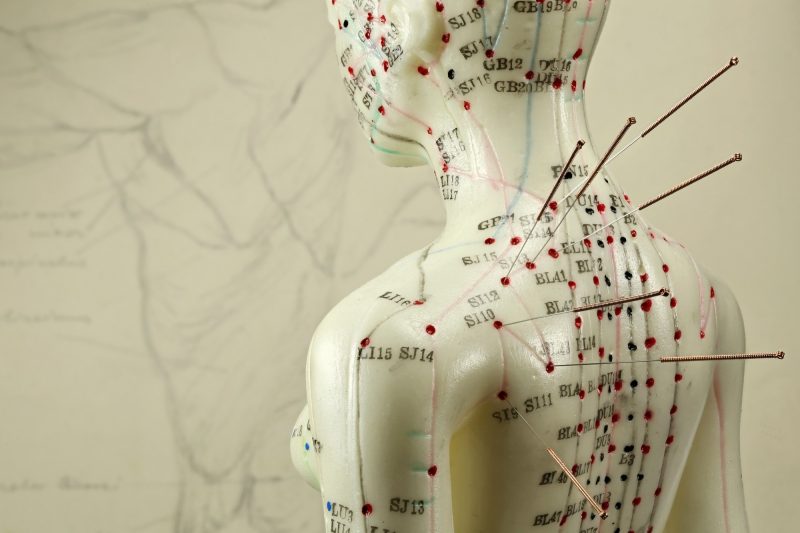Study reveals acupuncture and massage as effective pain management in advanced cancer

In a recent clinical trial published in JAMA Network Open, researchers from the United States of America (USA) assessed and compared the effectiveness of acupuncture and massage therapy for musculoskeletal pain in 298 patients with advanced cancer. They found that both treatments could reduce pain, fatigue, and insomnia in patients while improving their quality of life (QoL) over 26 weeks.
Study: Acupuncture vs Massage for Pain in Patients Living With Advanced Cancer. Image Credit: Bjoern Wylezich / Shutterstock
Background
The QoL of about 67% of patients with advanced cancer is hampered by pain, a debilitating symptom that often presents with fatigue and insomnia. Although the treatment of pain in these patients relies majorly on the use of opioids, the ongoing opioid crisis limits the prescription of and access to these drugs. Additionally, the potential side effects of such medications underscore the increased need and preference for alternative therapies for pain management.
The 2022 guidelines from the American Society of Clinical Oncology and the Society for Integrative Oncology recommend using acupuncture and massage for oncologic pain management. Evidence suggests that acupuncture is effective in treating pain in cancer survivors, but there’s a dearth of studies explicitly conducted on patients with advanced cancer. The long-term benefits of massage in cancer pain management have also not been thoroughly investigated or compared with those of acupuncture.
Given the increased life expectancy now offered by advancements in treatment modalities for cancer, healthcare providers must make evidence-based, informed decisions to potentially integrate nonpharmacologic therapies for managing pain in patients. Addressing this need, researchers in the present study conducted a randomized clinical trial to evaluate and compare the long-term effectiveness of massage and acupuncture in treating pain, fatigue, and insomnia in patients with advanced cancer.
About the study
The IMPACT trial (short for Integrative Medicine for Pain in Patients with Advanced Cancer Trial) is a multicenter, two-arm, pragmatic, parallel-group randomized clinical trial. Patients with various forms of advanced (stages III or IV) or unresectable cancer were included if they were above 18 years of age, had a Karnofsky ≥60, were fluent in English or Spanish, and had a clinician-estimated life expectancy of six months and above. Most importantly, the included patients had regional or generalized musculoskeletal pain (as the primary pain) for at least one month, with a self-rated worst pain intensity ≥ 4. The patients with a platelet count lower than 150 x 109/liter were excluded.
A total of 298 patients with a mean age of 58.7 years were included in the trial, of which 67.1% were female. The mean time post-diagnosis was 5.6 years, and the mean pain duration was 3.8 years. About 78.5% of patients had solid tumors, and 54.7% of patients received pain medications. The patients were randomized in a 1:1 ratio to receive either acupuncture (n = 150) or massage (n = 148) via licensed and oncology-experienced therapists.
The patients reported outcomes at weeks 0, 4, 10, 14, 18, 22, and 26. The primary outcome was measured as the worst pain intensity in the previous week, measured via the Brief Pain Inventory (BPI) on a scale of 0 to 10. Similarly, comorbid symptoms and the health-related QoL were measured using the Brief Fatigue Inventory, the Insomnia Severity Index, and the Patient-Reported Outcomes Measurement Information System Scale.
In the acupuncture therapy, 10–20 needles were placed (at appropriate depths) at ≥ 4 local points around the area with maximal pain in the body for about 20 minutes. The needles were manipulated to achieve local soreness or distension (de qi), indicating effective needling. In patients without electric medical device implants, electric stimulation was applied at 2 Hz.
The massage therapy was initiated with guided diaphragmatic breathing exercises, occipital release, and rib mobilizations for five minutes, followed by 20 minutes of massage in the primary pain area and effleurage toward the heart. Light-to-moderate pressure was applied, and the techniques included muscle stripping, compression, post-isometric stretching, active/passive range of motion, effleurage, and various releases (myofascial, positional, and trigger points).
The statistical analysis included the use of linear mixed models, least-square means, and the determination of Cohen d values, accompanied by sensitivity analyses.
Results and discussion
At the end of 26 weeks, more than 50% of patients receiving acupuncture or massage treatment showed a clinical response. As compared to baseline, the patients receiving acupuncture or massage showed a reduction in the BPI worst pain score, fatigue, insomnia, dependence on pain medications, and an improved QoL. No significant difference was observed in the effectiveness of the two treatment types. While the most common side effects of massage were transient soreness and headache, those of acupuncture were bleeding, localized pain, and bruising.
However, the study is limited by the lack of sham or controls, lack of blinding of clinicians and patients, and lack of generalizability to community settings.
Conclusion
The study’s findings provide valuable evidence of the long-term effectiveness of acupuncture and massage in reducing pain and associated symptoms in patients with advanced cancer, indicating their potential benefits as integrative modalities for improving patient outcomes.








